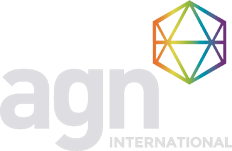Readers of our blog will recognize this topic, as we’ve written about it before. There is a new standard that drastically changes the accounting for lease contracts that primarily affect lessees. As the date edges closer, it’s time for a reminder.
In February, 2016 the Financial Accounting Standards Board (FASB) issued Accounting Standards Update (ASU) 2016-02, Leases. This is significant for any company that has leases or plans to lease in the future. There are no exemptions for different types of companies or industries. The standard takes effect January 1, 2022, for private companies reporting with a calendar year-end.
Existing Standards
Existing lease standards required a lease to be reported on the balance sheet only if the arrangement is similar to a financing arrangement. Leases with this characteristic are typically referred to as a capital lease. A right-to-use asset and related lease liability are reflected on a company’s balance sheet similar to how an asset purchased with debt would be reflected. Leases without characteristics of a financing arrangement are treated as an operating lease which has no balance sheet impact. Rent expense is recorded on a straight-line basis.
Updated Standards
Under the new standards, all leases with terms greater than 12 months will be reflected on a company’s balance sheet. There will be Type-A (financing) and Type-B (operating) lease, both of which require recognition of a right-to-use asset and a lease liability based on the present value of the payments required by the lease. Financing leases will be accounted for similarly to existing capital leases with front-loaded interest expense plus constant amortization expense. Payments for these leases will be included in the financing activities section of the cash flow statement. Operating leases will require companies to record straight-line lease expense. Payments for these leases will be included in the operating activities section of the cash flow statement.
There are also expanded disclosures regarding the terms and assumptions used to estimate lease obligations. Private companies can use risk-free rates to measure lease liabilities. Renewal and termination options will need to be evaluated and could be included in the remaining economic life if there is a reasonable expectation that the options will be exercised by the company.
Preparing for Adoption
Companies impacted by the change should begin working toward implementation immediately. Key steps that each company should consider are as follows:
- Establish a cross-functional implementation team to be responsible for evaluating all current leases to determine how the new rules will impact the company. This team should develop a project plan outlining key steps and milestones required to ensure successful implementation. An implementation timeline should also be established.
- Educate stockholders, board of directors, management, and others on the impacts of the new accounting rules.
- Create pro-forma financial statements to complete your evaluation of the impacts on the balance sheet, existing debt covenants, and key ratios.
- Consider renegotiating leases in order to limit any negative impact on the company’s financial statements.
- Discuss the impacts of the new rules with creditors and renegotiate debt covenants where needed.
- Consider the use of a third party software solution to assist with the calculations needed to implement the new standard.
Conclusion
This new standard has the potential to significantly impact company balance sheets, accounting processes, debt covenants, and your company’s overall accounting environment. The most important tip for preparing for adoption is immediately putting a team together and charging them with developing a project plan outlining key steps and milestones required to ensure successful implementation.
How Froehling Anderson Can Help
Froehling Anderson’s accounting and assurance team is positioned to help companies implement the new standards by:
- Providing training to help understand the new standard.
- Assisting with taking inventory of existing leases.
- Performing an accounting analysis of the impact on existing leases.
- Designing and implementing new accounting processes and controls to ensure proper implementation of the new standard.
- Assisting in drafting pro-forma financial statements, disclosures, and accounting policies.


